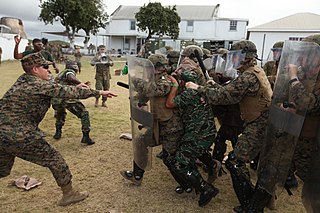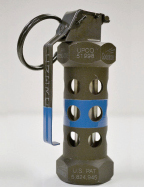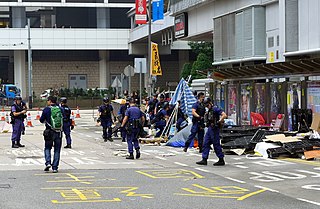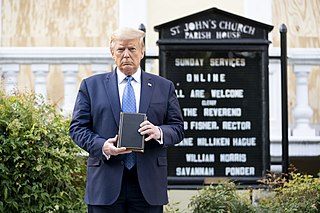
Non-lethal weapons, also called nonlethal weapons, less-lethal weapons, less-than-lethal weapons, non-deadly weapons, compliance weapons, or pain-inducing weapons are weapons intended to be less likely to kill a living target than conventional weapons such as knives and firearms with live ammunition. It is often understood that unintended or incidental casualties are risked wherever force is applied, however non-lethal weapons minimise the risk of casualties as much as possible. Non-lethal weapons are used in policing and combat situations to limit the escalation of conflict where employment of lethal force is prohibited or undesirable, where rules of engagement require minimum casualties, or where policy restricts the use of conventional force. However, these weapons occasionally cause serious injuries or death due to allergic reactions, improper use and/or other factors; for this reason the term "less-lethal" has been preferred by some organizations as it describes the risks of death more accurately than the term "non-lethal", which some have argued is a misnomer.

Rubber bullets are a type of baton round. Despite the name, rubber bullets typically have either a metal core with a rubber coating, or are a homogeneous admixture with rubber being a minority component. Although they are considered a less lethal alternative to metal projectiles, rubber bullets can still cause fatal injuries as well as other serious injuries such as blindness or other permanent disabilities.

Plastic bullet can refer to:

Riot control measures are used by law enforcement, military, paramilitary or security forces to control, disperse, and arrest people who are involved in a riot, unlawful demonstration or unlawful protest.

A stun grenade, also known as a flash grenade, flashbang, thunderflash, or sound bomb, is a non-lethal explosive device used to temporarily disorient an enemy's senses. Upon detonation, a stun grenade produces a blinding flash of light and an extremely loud "bang". They are often used in close-quarters combat, door breaching, and riot control, typically to stun enemies or distract them.

CR gas or dibenzoxazepine (chemical name dibenz[b,f][1,4]oxazepine, is an incapacitating agent and a lachrymatory agent. CR was developed by the British Ministry of Defence as a riot control agent in the late 1950s and early 1960s. A report from the Porton Down laboratories described exposure as "like being thrown blindfolded into a bed of stinging nettles", and it earned the nickname "firegas".

A police riot is a riot carried out by the police; more specifically, it is a riot that police are responsible for instigating, escalating or sustaining as a violent confrontation. Police riots are often characterized by widespread police brutality, and they may be done for the purpose of political repression.

Riot police are police who are organized, deployed, trained or equipped to confront crowds, protests or riots.

In current usage, a riot gun or less-lethal launcher is a type of firearm used to fire "non-lethal" or "less-lethal" ammunition for the purpose of suppressing riots or apprehending suspects with minimal harm or risk. Less-lethal launchers may be special purpose firearms designed for riot control use, or standard firearms, usually shotguns and grenade launchers, adapted for riot control use with appropriate ammunition. The ammunition is most commonly found in 12 gauge shotguns and 37mm or 40 mm grenade launchers.

Tear gas, also known as a lachrymatory agent or lachrymator, sometimes colloquially known as "mace" after the early commercial self-defense spray, is a chemical weapon that stimulates the nerves of the lacrimal gland in the eye to produce tears. In addition, it can cause severe eye and respiratory pain, skin irritation, bleeding, and blindness. Common lachrymators both currently and formerly used as tear gas include pepper spray, PAVA spray (nonivamide), CS gas, CR gas, CN gas, bromoacetone, xylyl bromide, chloropicrin and Mace.

A riot shotgun is a shotgun designed or modified for use as a primarily defensive weapon, by the use of a short barrel and sometimes a larger magazine capacity than shotguns marketed for hunting. The riot shotgun is used by military personnel for guard duty and was at one time used for riot control, and is commonly used as a door breaching and patrol weapon by law enforcement personnel, as well as a home defense weapon by civilians. Guns of this type are often labeled as breaching shotguns, tactical shotguns or special-purpose shotguns to denote the larger scope of their use; however, these are largely marketing terms.

Flash-Ball is a registered trademark for a less-lethal hand-held projectile launcher developed by French hunting firearms manufacturer Verney-Carron. Flash-Ball is intended to be used by riot police as an alternative to lethal firearms, bean bag rounds and plastic bullets.
37 mm flare or "1.5 inch" caliber is the specification for a common launching system for non-lethal and less-lethal ammunition. Such launchers are also often known as "gas guns" due to their original use by police for launching tear gas projectiles. 37 mm systems are typically smoothbore as rifling is unnecessary or even detrimental to the performance of the usual projectiles.

A sponge grenade is a riot control weapon, intended to be non-lethal, which is fired from a 40 mm grenade launcher to cause confusion, or otherwise temporarily disable its target. As a single blunt force object, it is best used when aimed at a particular individual.

The Special Tactical Contingent, nicknamed the "Raptors", commonly known as the Special Tactical Squad (STS), is a specialist riot contingent of the Hong Kong Police Force under the command of the Police Tactical Unit (PTU).

Crowd control in Jammu and Kashmir is a public security practice to prevent and manage violent riots. It is enforced by police forces through laws preventing unlawful assembly, as well as using riot control agents such as tear gas, chili grenades, and pellet guns.

On June 1, 2020, amid the George Floyd protests in Washington, D.C., law enforcement officers used tear gas and other riot control tactics to forcefully clear peaceful protesters from Lafayette Square, creating a path for President Donald Trump and senior administration officials to walk from the White House to St. John's Episcopal Church. Trump held a Bible and posed for a photo op in front of Ashburton House, which had been defaced by graffiti and damaged by a fire set during protests the night before.

The city of Seattle experienced protests over the murder of George Floyd in 2020 and 2021. Beginning on May 29, 2020, demonstrators took to the streets throughout the city for marches and sit-ins, often of a peaceful nature but which also devolved into riots. Participants expressed opposition to systemic racism, police brutality and violence against people of color.

Carmen Best is an American former law enforcement officer who served as the chief of police of the Seattle Police Department from 2018 to 2020. She was the first black woman to lead Seattle's police force. She was chief of police during the George Floyd protests. She announced her resignation in August 2020 following budget cuts, and officially left office on September 2, 2020. Best currently serves as Director of Global Security Risk Operations at Microsoft.



















